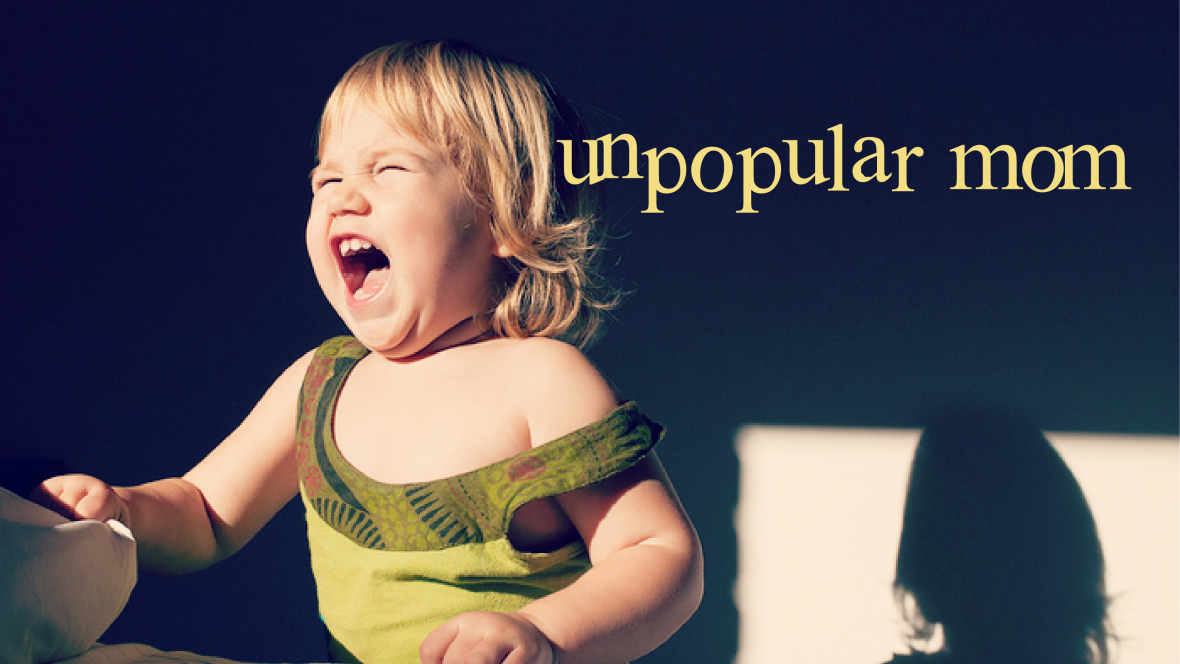We’re in a restaurant and my toddler is screaming. I feel your eyes on us, but I make no move to leave. When I return your stare, I see you look away quickly; not so fast, though, that I don’t catch your eye-roll. I can feel your annoyance coming at me in waves. And you know what? I could not care less. And we’re not moving.
When my toddler pitches a fit in public, in public we stay. There is no marching out of the store or leaving the restaurant, there is no dragging to the bathroom to calm down. We deal with it where it happens, when it happens—there is no hiding out.
And no, I don’t typically take my toddler to a fancy steakhouse for dinner, but if I did decide to, I’d still follow the same protocol during a tantrum.
“How rude!” You insist. “You are disturbing everyone’s peace! Why won’t you control your child?”
Here’s the hard truth: my parenting decisions are not based on your level of comfort. The ways I discipline my child (or don’t) are not designed to meet your approval or to enhance your happiness level. That my child knows my limits and her boundaries in the moment is more important to me than what you think of my parenting, and *listen closely* leaving the store/restaurant/situation gives my child the wrong idea. Removing ourselves from the venue doesn’t accomplish anything other than to make sure someone else doesn’t hear the screaming—and teaches my daughter that if she wants to leave somewhere, all she has to do is scream. Ultimately, this could possibly mean that the more often moms flee the scene, the more screaming babies you’re likely to encounter in the future, and the fewer Nutella lattes you’ll get to sip in peace.
Ultimately, though, when we stay where we are during a meltdown, I’m teaching my daughter that big reactions don’t change your immediate situation, but that calming down and talking things through can. See, I don’t want my daughter to get the idea that mommy is afraid of big feelings, or that we need to run away whenever we feel something big. When we face her overwhelming feelings in a calm way (which doesn’t always happen, trust me), she learns that facing big emotions isn’t scary. On the other hand, if I run away with her in tears, she learns that I want her to hide her emotions for other people’s comfort.
It doesn’t always mean that a conversation takes place right then, during the tantrum. I may have to pace around the grocery store with her in silence, returning people’s glares and eye rolls while she screams it out. Typically though, after a few minutes, when she sees that she’s getting no reaction out of me, she calms down. Then we talk about her feelings and why she didn’t get what she wanted.
This approach works for us and it’s not going to change—this is how I am raising my little firebrand. Of course, you can agree or disagree—it doesn’t matter to me—growing my child into a good human will always be my priority.



Excellent logic and you explain it so matter-of-factly that I can’t imagine why anyone would do anything differently. I may steal your strategy of calming my toddler down during future public tantrums. Thanks.
Love this!